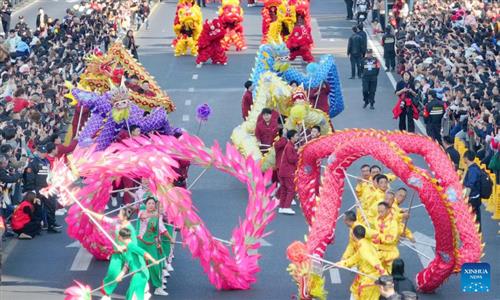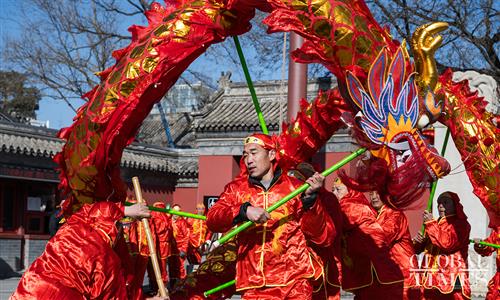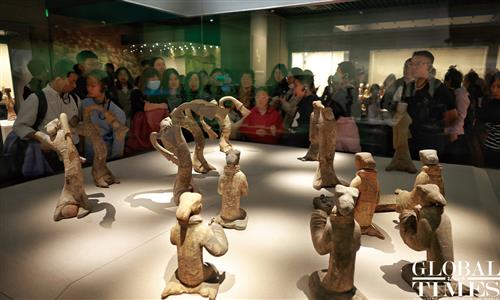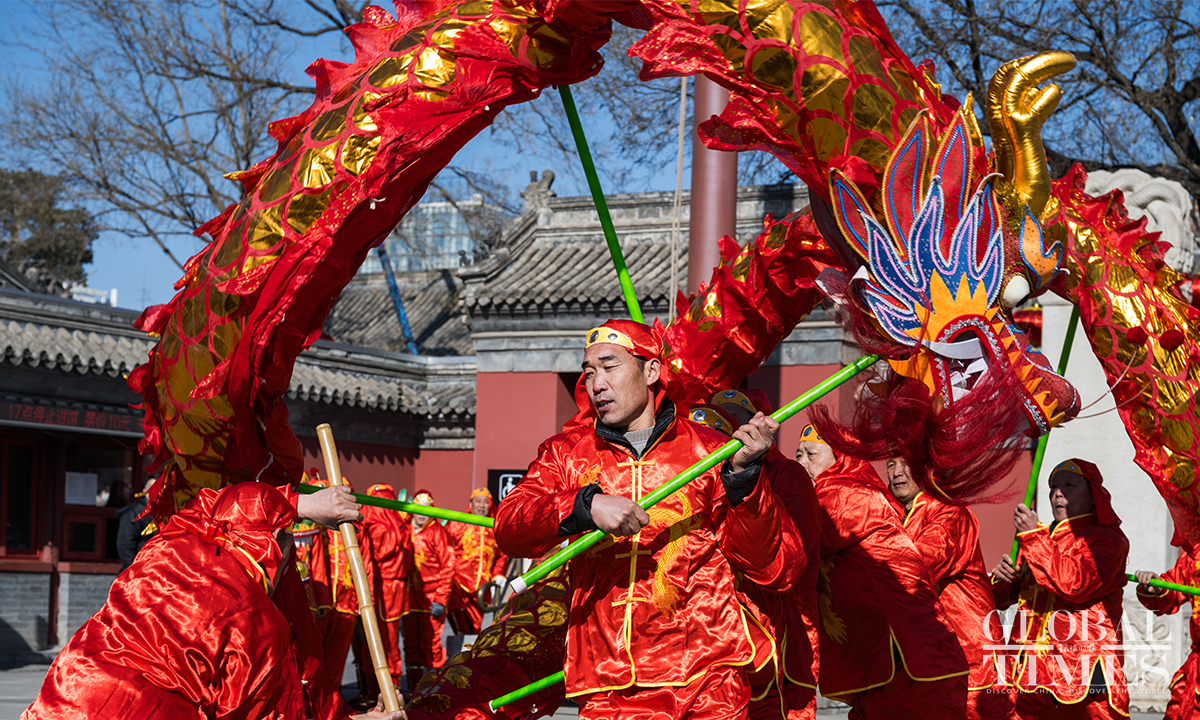
Photo:Chen Tao/GT
Crowds have been seen in temples across China during this year’s eight-day Spring Festival holidays, as Chinese people are embracing the Year of the Dragon by flocking to temple fairs to pray for blessings, luck, and good fortune for the coming year.
The just-passed Valentine’s Day on Wednesday, which was also the fifth day on the lunar calendar of the Chinese New Year, is traditionally the day to greet the God of Wealth. Locals and tourists lined up in temples nationwide since the early morning to welcome abundance amid diverse activities and ceremonies.
Temple fair, also known as Miaohui, is a traditional folk activity in China. Temple fairs are commonly held as part of religious activities paying tribute to gods and immortals, while the Spring Festival temple fair remains the most well-known and popular across the country.
Events at temple fairs can be divided into three types: religious ceremonies, entertainment events such as traditional folk games and performances, and trade activities. In recent years, temple fairs have also focused on demonstrating traditional Chinese folk performances such as the lion dance, martial arts and acrobatics, as well as exhibiting folk handicrafts.
A Beijing resident surnamed Chi visited the local Huoshen Temple and the Tanzhe Temple to pray for wealth and prosperity. “People praying for the God of Wealth were queuing up from the front door of the Huoshen Temple when I arrived in the morning, and the line had already extended to 50 meters outside the door,” Chi told the Global Times on Thursday.
She said the line at the Tanzhe Temple was also long during her visit in the afternoon, which was about 100 meters.
Global Times reporters witnessed multiple temple fairs held in Beijing during the holidays from industrial heritage blending with cyberpunk China-chic at Shougang Park to the traditional drum beating and colorful festive flags shown at the Dongyue Temple Fair, as a wide range of activities have soaked up the festival atmosphere.
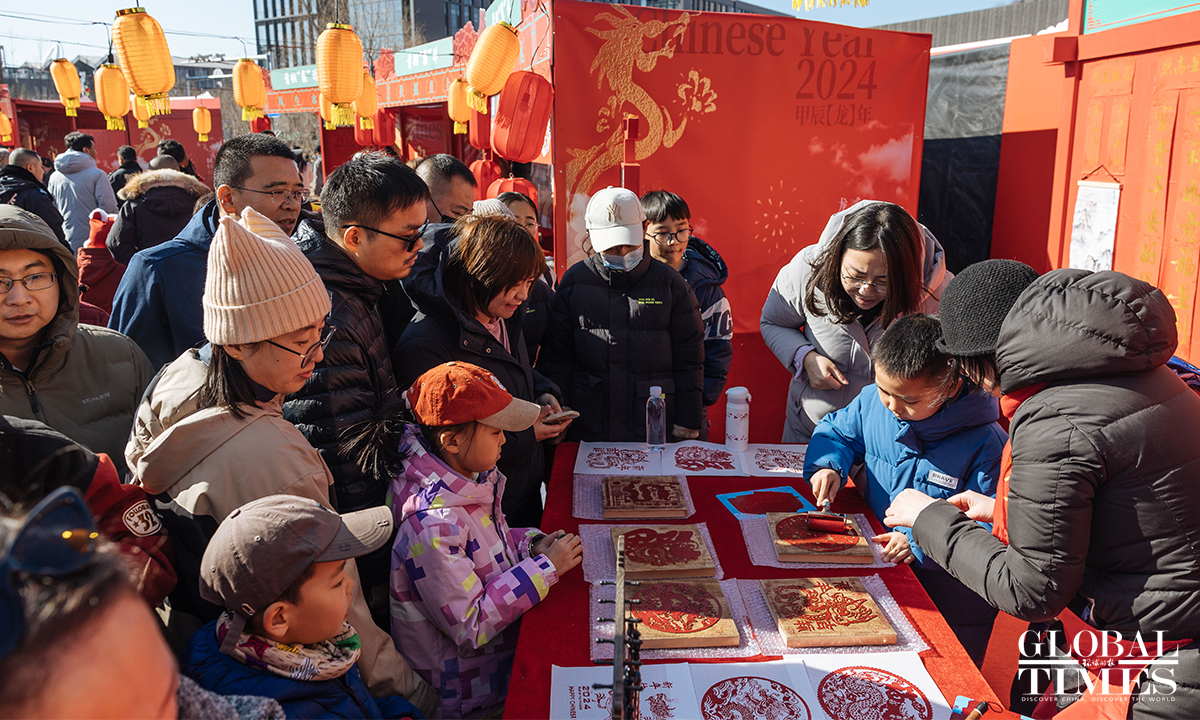
Photo:Li Hao/GT
Videos and posts on Chinese social media platforms showcased the busy scenes at the temple fairs in Beijing. More than 130,000 visitors visited the temple fair at the Ditan Park on Sunday – the opening day of the fair.
In addition to Beijing, a large number of Chinese cities including Shanghai, Hangzhou Chengdu, and Fuzhou have organized temple fairs and traditional events to spice up the holiday spirit amid the travel boom.
Media reports said the Lingshun Temple in Hangzhou, East China’s Zhejiang Province is seen full of people to greet the God of Wealth since 3 am on early Wednesday morning.
A Southwest China’s Chongqing resident surnamed Zeng who returned home from the Netherlands for the holidays after five years, told the Global Times on Thursday that she feels the Chinese tea culture and temple culture have become even more prosperous.
Zeng also visited a local temple in Chongqing on Wednesday to pray for the blessings for her family and friends.
Pageant on Immortals or Youshen in Chinese remain popular in Fuzhou, East China’s Fujian Province during the festival as people carry the images of deities through the streets. The tradition is a “walking museum” of Fuzhou's folklore, as locals attach new year’s wish such as praying for good fortune to the tradition.
The hustle and bustle seen at the temple fairs is just a snapshot demonstrating the travel boom and vital consumption during the holidays, as consumption is poised to play a vital role in bolstering China’s economic progress.
As of 11:11 am on Thursday, China’s office box for the Spring Festival holidays exceeded 6 billion yuan ($836.82 million), according to Chinse ticketing platform Dengta.
Some 14.25 million passenger trips were made through China’s railway system on Wednesday, hitting a historical high for a single-day passenger flow during Spring Festival travel rush, chunyun, while the number of railway passenger trips in the first half of the 40-day chunyun from January 26 to February 14 reached 230 million, according to China Railway.
Meanwhile, the sales of festival commodities were also booming. The sales of organic food and gold and silver jewelry from key enterprises monitored by the Ministry of Commerce (MOFOM) increased by more than 10 percent year-on-year, media reported.
The service consumption is also picking up, with the accommodation turnover for monitored e-commerce platforms increasing by more than 60 percent year-on-year, per the MOFCOM data.
